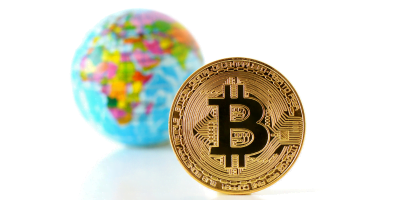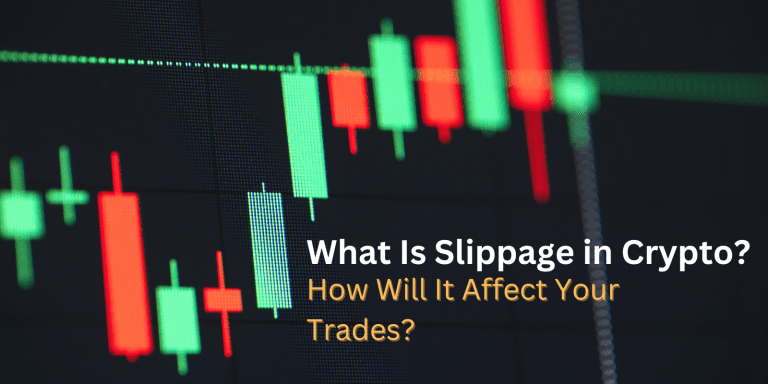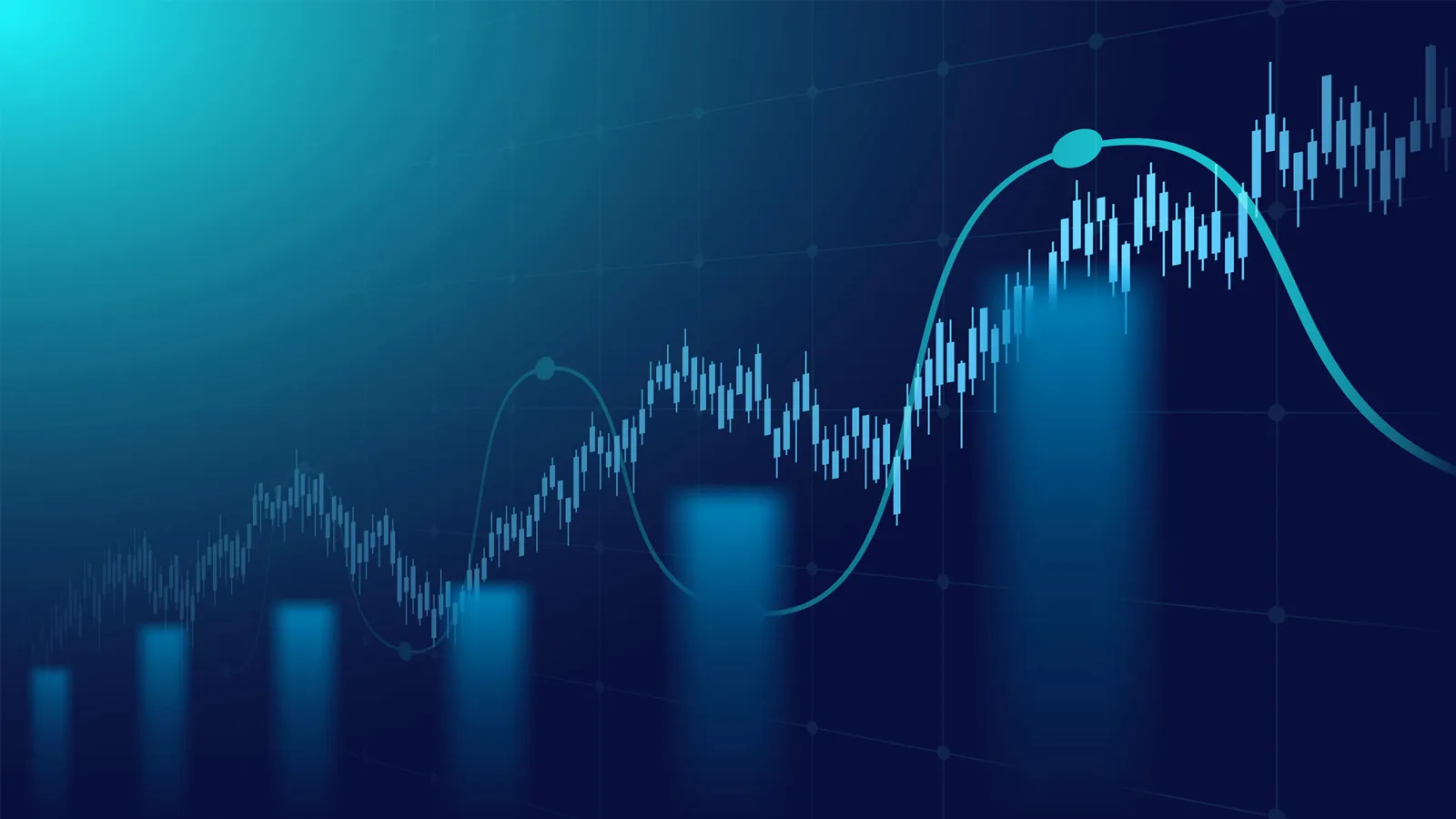Table of Contents
ToggleWhen you trade cryptocurrencies, you may have heard the term “slippage.” What is slippage, and how will it affect your trades? Slippage is simply the difference between the expected price of a trade and the actual price. For example, if you place a buy order for 1 BTC at $10,000 but the actual price ends up being $10,100, you would experience slippage of $100.
Slippage can be caused by a variety of factors, including high volume or volatility in the market. In this blog post, we will discuss how slippage can affect your trades and how to minimize its impact.
What is slippage in cryptocurrency?
Slippage is a term used in the cryptocurrency industry to describe the difference between the expected price of a trade and the price at which the trade actually executes. It can occur when there is high market volatility or when there is a large imbalance between buy and sell orders.
Slippage can be either positive or negative, depending on whether the actual price is higher or lower than the expected price. While some degree of slippage is to be expected in any market, it can be especially problematic in the cryptocurrency market due to its high volatility. As a result, many traders take care to limit their exposure to slippage by using limit orders rather than market orders.
Why does it happen in the crypto world specifically?
Slippage is a well-known phenomenon in the crypto world and it happens when an order is executed at a price that is different from the expected price. This can happen due to a number of reasons, including market conditions, bitcoin network congestion, or a lack of liquidity.
When market conditions are volatile, orders can be filled at prices that are significantly different from the expected price. Bitcoin network congestion can also lead to slippage, as there may not be enough miners to process all of the transactions.

Finally, a lack of liquidity can also cause slippage, as there may not be enough buyers or sellers to fill all the orders. As a result, slippage is a common occurrence in the crypto world and it can often lead to significant losses for traders.
How slippage affects crypto trades
Slippage can occur when there is high demand for an asset, causing the price to move quickly and making it difficult for traders to execute their orders at the desired price. Slippage can also happen when there is a large sell order that drives down the price.
In either case, slippage can have a significant impact on crypto trades, as it can eat into profits or amplify losses. For this reason, it is important for traders to take slippage into account when planning their trades. By understanding how slippage works and how to avoid it, traders can minimize its impact and protect their investments.
What can you do to minimize its impact on your portfolio or strategies?
There are a few things that you can do to minimize the impact of slippage on your portfolio or strategies. First, you can try to trade during periods of low volatility. Second, you can use limit orders instead of market orders. Finally, you can make sure to have enough funds available to cover any differences in price. By taking these steps, you can help to ensure that your portfolio remains stable despite fluctuating prices.
What do Coinbase and other platforms do to minimize slippage?
To help prevent slippage, many exchanges display a slippage and average price estimate at the bottom of every market order. This way, you can see how much the price has changed in recent trades and get a better idea of what price you’re likely to get.
In addition, some exchanges allow you to set a maximum slippage percentage, so your order will only be executed if the price doesn’t move too far away from the original quote. By taking these precautions, Coinbase and other exchanges help to minimize slippage and protect their users from unwanted losses.
Examples of how slippage has played out in recent market movements

- In January 2018, when people started to buy Bitcoin in Dubai in large amounts, the value of Bitcoin fell by more than 25% after reaching an all-time high of nearly $20,000 per coin in December 2017.
- In July 2018, the value of Ethereum fell by more than 20% after reaching an all-time high of over $1,400 per coin in June 2018.
- In September 2019, the value of Ripple fell by more than 70% after reaching an all-time high of over $3 per coin in August 2019.
- In November 2021, the value of Bitcoin Cash fell by more than 80% after reaching an all-time high of over $2,700 per coin in October 2021.
- In December 2021, the value of Litecoin fell by more than 90% after reaching an all-time high of over $370 per coin in November 2021.
How to avoid Slippage in crypto?
One of the biggest dangers when trading cryptocurrencies is slippage. Slippage can occur when you place an order to buy or sell a cryptocurrency, and the order doesn’t get filled immediately at the price you wanted. This can cause you to end up paying more or receiving less for your coins than you originally intended. You can be patient and wait for the right opportunity. Don’t rush into trades that might not be profitable in the long run. Use limit orders instead of market orders. Limit orders allow you to specify the exact price at which you want to buy or sell USDT in Dubai or any other crypto, which can help reduce the chances of slippage in online trading.
In addition, if you want to buy Ethereum in Dubai or any other leading cryptocurrency, you can use an OTC exchange, to avoid slippage where you can pay for digital currencies through fiat currency.
Tips for minimizing the risk of slippage in your own trading
Use a stop-loss order
A stop-loss order is an order that you place with a broker to buy or sell a security when it reaches a certain price. Stop-loss orders are designed to limit your losses in a trade by selling the security automatically at a predetermined price. For example, if you buy a security for $100 and place a stop-loss order at $95, then your broker will sell the security automatically if it drops to $95.
Use limit orders
Limit orders are similar to stop-loss orders in that they are designed to limit your losses in a trade. However, unlike stop-loss orders, limit orders do not sell security automatically. Instead, they simply set a maximum price at which you are willing to buy or sell the security. For example, if you buy a security for $100 and place a limit order at $95, then you will only sell the security if it drops to $95 or lower.
Do not trade on margin
Margin is the amount of money that you borrow from your broker to purchase securities. Trading on margin allows you to leverage your capital, but it also increases your risk of losses. If the price of the security falls, then you may be required to provide additional funds to cover your losses. Therefore, it is generally advisable to avoid trading on margin unless you have a significant amount of capital to risk.
Diversify your portfolio
Diversification is an investment strategy that involves spreading your capital across different asset classes and industries in order to minimize your risk of losses. By diversifying your portfolio, you will be less likely to suffer substantial losses if the price of one particular asset class or industry falls.
Review your trades regularly
It is important to review your trades regularly in order to identify any potential problems early on. By reviewing your trades, you can look for patterns that may indicate that you are at risk of slippage. For example, if you notice that you frequently enter and exit trades near the same price, then this may be an indication that you need to adjust your trading strategy
How Slippage could impact the crypto market as a whole
Cryptocurrency prices are extremely sensitive to news and announcements, which can cause large price swings. For example, when the South Korean government announced that it was considering a ban on cryptocurrency trading, the price of Bitcoin dropped by 11%.
Slippage is a major factor that can cause large price swings. When large orders are placed, it can push the price of a currency in one direction. If there isn’t enough liquidity (the availability of buyers and sellers) to fill the order, the price will move further in that direction until the order can be filled. This can cause a domino effect as other traders see how much the price has moved and decide to buy or sell accordingly. As a result, slippage can lead to sharp price movements in either direction.
The future of slippage
Slippage typically occurs during periods of high volatility when there is a large disparity between the bid and ask prices. While slippage is often considered to be negative, it can also be positive if the asset’s price has risen in the meantime. In either case, it’s important to take into account the potential for slippage when trading cryptocurrencies.
The future of slippage will largely depend on the direction of the crypto market. If prices continue to rise, we can expect to see more instances of positive slippage. However, if the market turns bearish, we may see more negative slippage as traders’ attempt to exit their positions. Either way, it’s important to be aware of the potential for slippage and to factor it into your trading strategy.
Frequently Asked Questions
What happens when slippage is high?
When slippage is high, it means that the difference between the expected price and the actual price is large. This can be bad for investors because it can mean they don’t get the best price for their assets. It can also cause prices to move in unexpected ways, which can lead to losses.
Do you lose money with slippage?
There is no definitive answer to this question. It depends on a number of factors, including the type of order you place, the market conditions at the time, and the liquidity of the security. In general, however, slippage is more likely to occur when market conditions are volatile or when there is high volume. And it’s more likely to occur with illiquid securities.
What should I set slippage to?
Slippage is determined by the volatility of the market and the size of your order. For example, if you are buying or selling a large amount of cryptocurrency, your order will have a higher chance of experiencing slippage than if you are buying or selling a small amount.
It’s also important to note that slippage can vary greatly depending on which exchange you are using. So it’s always important to do your research before placing an order to ensure you are getting the best possible price.
How is crypto slippage calculated?
Crypto slippage is calculated by taking the current market price of a digital asset (excluding NFTs) and subtracting the median sell order from all sell orders on the order book. This value is then multiplied by 100 to get the percentage.
For example, if the median sell order on an exchange’s order book is $100 and the current market price for a particular digital asset is $105, then the crypto slippage would be 5%. This means that if you wanted to sell your digital asset at market price, you would actually only receive 95% of what you asked for because of all of the buy orders in between your order and the seller with the median sell order.





